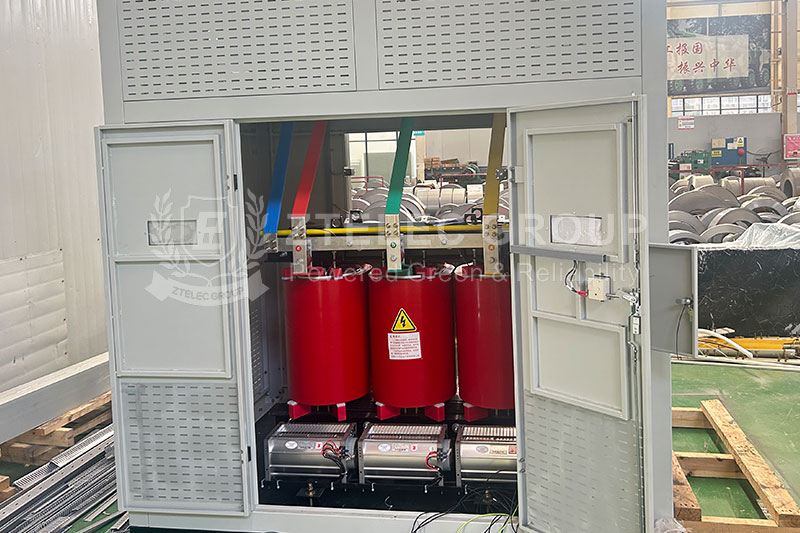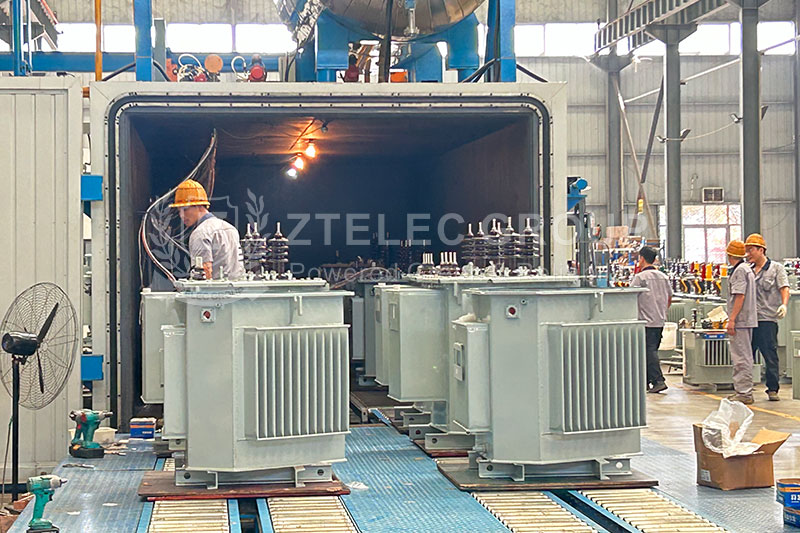Advantages of Using Dry-Type Transformers Over Oil-Filled Options
Transformers are crucial components in electrical systems, playing a key role in voltage regulation, distribution, and electrical isolation. When choosing a transformer, one must consider various types, notably dry-type transformers and oil-filled transformers. While both serve similar functions, dry-type transformers offer several distinct advantages that make them increasingly preferred in certain applications. This article will explore the benefits of dry-type transformers over their oil-filled counterparts.

dry-type transformers
Dry type transformers have several advantages over their oil filled counterparts:
1. Safety and Environmental Concerns
One of the most significant advantages of dry-type transformers is their enhanced safety profile. Dry-type transformers do not use flammable liquids for cooling, reducing the risk of fire hazards. This is particularly important in urban settings or areas with strict fire codes. In contrast, oil-filled transformers pose a greater risk of oil leaks, which can lead to environmental contamination and necessitate costly cleanup measures.
2. Lower Maintenance Requirements
Dry-type transformers generally require less maintenance compared to oil-filled transformers. Since they do not contain liquid, there is no need for the periodic inspections and maintenance related to oil levels, leaks, and potential environmental impact. This low maintenance requirement can lead to reduced operational costs and the minimization of service disruptions.
3. Installation Flexibility
Dry-type transformers are often lighter and more compact than oil-filled transformers, allowing for easier installation in confined spaces. They can be installed indoors without the need for special containment or ventilation systems to manage potential leaks, which is a common requirement for oil-filled units. This flexibility opens up more options for placement, especially in urban and industrial environments.
4. Improved Efficiency and Performance
Dry-type transformers can operate efficiently at a wider range of temperatures. They are less susceptible to thermal degradation issues over time since they use air as a coolant instead of oil, which can break down and affect performance. Furthermore, advanced dry-type transformer designs, such as encapsulated units, enhance performance by providing better insulation and reducing losses, leading to overall improved efficiency.
5. Reduced Footprint and Weight
Due to their absence of liquid cooling systems, dry-type transformers typically have a smaller footprint and lighter design than oil-filled transformers. This space-saving feature can be advantageous in facilities with limited ground area or weight-bearing capacity. Consequently, organizations can optimize their facilities for other equipment or activities.
6. Better Environmental Sustainability
With growing concerns about environmental impact, dry-type transformers are viewed as a more sustainable option. They do not pose risks of soil or water contamination from oil leaks, and their materials can often be recycled. Additionally, their operation typically produces fewer gases and materials that require special disposal.
7. Noise Reduction
Dry-type transformers are generally quieter than oil-filled transformers, especially in residential or commercial applications where noise reduction is a priority. The design of dry-type transformers can incorporate sound-dampening materials and techniques, contributing to a quieter operational environment.
8. Compliance with Regulatory Standards
As environmental regulations become stricter, dry-type transformers may offer an easier path to compliance. Many jurisdictions have specific guidelines regarding the use of oil-filled equipment due to the associated environmental risks. Dry-type transformers avoid these issues, simplifying the compliance process.
While dry-type transformers have many advantages, they also have limitations, such as poorer cooling capacity (suitable for lower power and load scenarios) and higher initial investment costs. Therefore, when selecting a transformer, it is essential to consider the specific application context and requirements comprehensively.

How to Choose a Transformer?
When selecting a transformer, it is essential to consider the operating environment and specific requirements comprehensively. Here are some common environments and corresponding transformer selection recommendations:
Normal Medium Conditions
In locations such as independent or auxiliary substations in industrial and agricultural enterprises, and independent substations in residential areas, either oil-immersed or dry-type transformers can be chosen based on the situation.
The types of transformers available for selection include: S8, S9, S10, SC(B)9, SC(B)10, etc.
Multi-Story or High-Rise Buildings
In multi-story or high-rise buildings, it is advisable to choose non-combustible or flame-retardant transformers to enhance safety.
Recommended transformer types include: SC(B)9, SC(B)10, SCZ(B)9, SCZ(B)10, etc.
Dusty or Corrosive Gas Environments
In environments where dust or corrosive gases substantially affect the safe operation of transformers, it is important to choose closed-type or sealed-type transformers.
Considerable transformer types include: BS 9, S9- , S10- , SH12-M, etc.
Distribution Equipment
Non-oil-immersed high and low voltage distribution devices and transformers can be placed in the same room.
In this case, the transformers should be equipped with an IP2X protective enclosure to ensure safety.
When choosing a transformer, it is crucial to thoroughly assess the operating environment and safety requirements, selecting the appropriate type of transformer based on specific conditions to ensure the safety, reliability, and efficiency of the equipment.
- more+releated article
- 2025-12-13How to Select and Use Phenolic Cloth-base Lami
- 2025-12-13How Much Does Bakelite Sheet Cost? 2025 Price
- 2025-12-13Why are most 3240 epoxy boards yellow?
- 2025-12-13What are the Main Applications of FR4 Epoxy Bo
- 2025-12-13Why Does the Price of Insulating Paperboard Va
- 2025-12-13Heat-Resistant DDP Insulation Paper
- 2025-12-13Comparison of Heat-Resistant DDP Insulating Pa
- 2025-12-13G10 and FR4 Epoxy Boards: Commonly Used for Ge
- 2025-12-13The Price of Heat-Resistant DDP Insulation Pap
- 2025-12-13How to Choose Epoxy Laminate Materials for Gen





